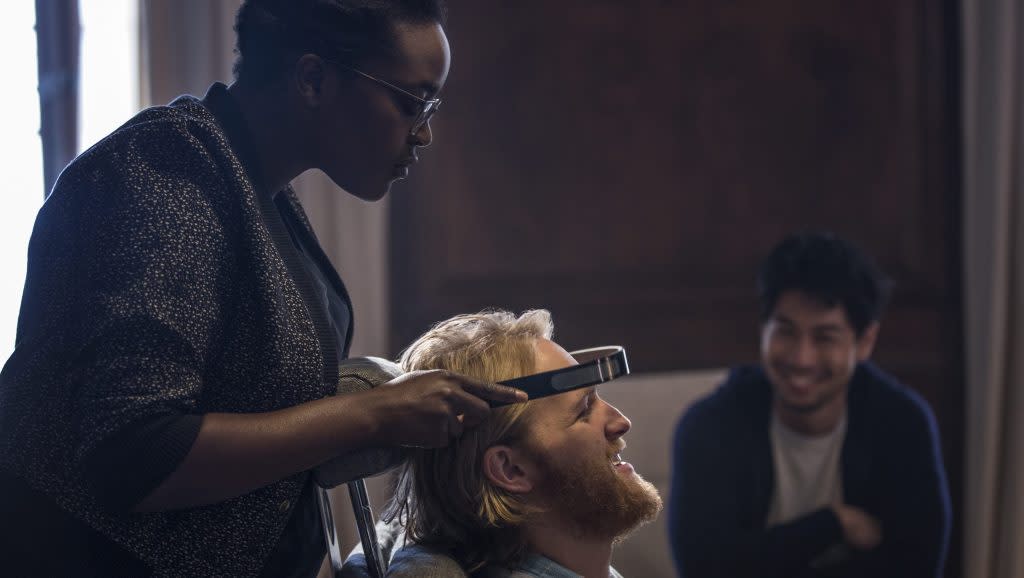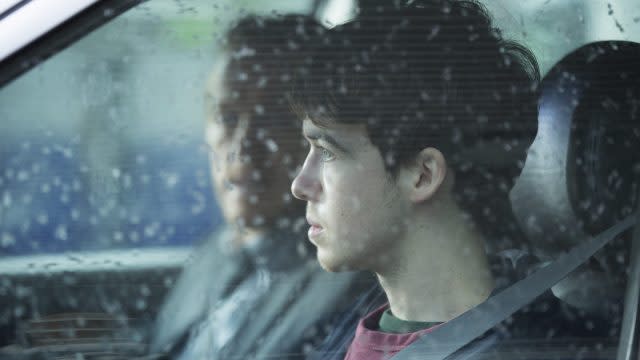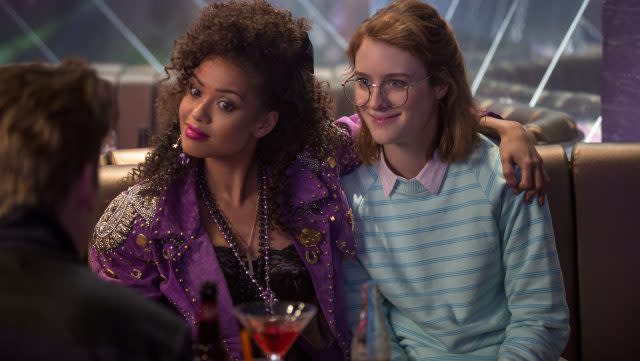The new season of “Black Mirror” on Netflix examines the menace of social media and virtual reality

Tomorrow (Oct. 21), Black Mirror is back. The sci-fi horror anthology series once broadcast on the UK’s Channel 4 moved to Netflix, where creator and writer Charlie Brooker has cooked up six new episodes to make us dread the future.
Some have dubbed Black Mirror “The Twilight Zone for the digital age,” and, indeed, it shares some DNA with Rod Serling’s legendary 1960s anthology show. But Black Mirror is very much its own creature. A satire of modern technology and the anxieties it creates, nothing in the show is out of this world. It’s a sensible extrapolation of our current technological capabilities, warning us that the devices we rely on should be scrutinized, not blindly trusted. When you look into the black mirror of your iPhone or iPad, what you see is, as the Netflix show might argue, a much darker version of yourself.
Here’s a look at the technologies (and modern-day concepts) that the new season of Black Mirror satirizes. (Look out for a piece next week that delves deeper into one of the new episodes.) This season was more focused in its themes than the prior two, looking closely at social media and other alternate forms of reality.
Facebook and Instagram

Imagine a world in which everyone you know is completely obsessed with receiving “likes” on social media. (That shouldn’t be too hard.) Now imagine that concept taken to its logical extreme.
In “Nosedive,” every social interaction, from elevator small talk to ordering a cup of coffee, is scored on a five-star scale by each participant. Buy donuts for the whole office? Five stars! Rude to the barista? Zero stars for you.
These scores add up to form a cumulative ranking, which literally determines a person’s social and economic status (the show finds some inventive ways to depict this). In the episode, Bryce Dallas Howard plays an office worker eyeing a nicer apartment she can’t afford unless she figures out a way to improve her score.
“Nosedive” is the new season’s least subtle satire, clearly digging at our anxiety about how we’re perceived on social media. It’s a fun episode, and perhaps the least dour of the bunch, but it’s a bit too on the nose.
Virtual reality

Black Mirror has toyed with virtual reality before (notably in the season one episode “Fifteen Million Merits”), but never like this. In “Playtest,” Wyatt Russell plays an American man backpacking in Europe, who comes across an ad online to test a new game for a prominent video game developer. Things start off innocent enough, but quickly devolve into the macabre.
“Playtest” blurs the line between what is “real” and what is “virtual,” and asks whether or not there’s a line at all. The episode is equal parts techno-thriller and haunted house romp (perhaps working best as the latter). Most Black Mirror episodes are scary in one way or another, but “Playtest” is perhaps its most sinister—both for rendering the grotesque possibilities of a virtual haunted house, and for the metaphysical horror of not understanding it.
Hackers and online traps

“Shut Up and Dance” is the only new Black Mirror episode that doesn’t take place in the future or in some other time period. It’s very much a present day story, one that can (and, likely, has) played out in real life.
Alex Lawther plays a shy young man whose life is thrown into utter chaos when his webcam is hacked and he’s recorded doing something embarrassing. He meets an older man (played by Jerome Flynn, also known as Bronn from Game of Thrones) who’s also being blackmailed by the unseen hackers. Together, they join forces to complete the hackers’ demands.
No futuristic technology is needed—”Shut Up and Dance” shows a nightmare scenario that could easily occur with today’s internet.
The 1980s—with a twist

It’s not immediately clear what makes “San Junipero”a Black Mirror episode as opposed to say, a distant relative of MTV’s Laguna Beach, but by the end you’ll know. Something in San Junipero is not quite right.
The episode takes place in the 1980s, in the fictional California beach town San Junipero, where tourists come to relax during the day and then party at night. Perhaps because it’s not a standard Black Mirror episode, “San Junipero” has more time to flesh out its characters, which makes it the best of the season.
No episode in this new slate moved me as much as “Be Right Back,” the second season installment about a grieving woman who signs up for a service that recreates her dead partner using his social media profiles. The technology in that episode was ancillary—merely a conduit through which Black Mirror could tell a story of loss and memory.
“San Junipero” feels closest to that episode, one in which the tech is not front-and-center but instead on the margins, allowing the intimate character moments to shine through. Gugu Mbatha-Raw and Mackenzie Davis both do great work as town newcomers looking to find themselves.
Military technology

In “Men Against Fire,” soldiers are equipped with an implant that gives them a major advantage over their more primitive enemies. They can “see” things—3D maps of buildings, battlefield plans, first-person views from a drone—that eliminate some of the risks of combat operations. But, of course, this is Black Mirror, so there’s still a downside to these technological advances.
The soldiers are told to track down a group of feral mutants that have pillaged a nearby town. The parallels with modern American warfare (a rich, technologically advanced nation attempting to keep the peace in a poorer, smaller one by blowing things up), are evident.

“Hated in the Nation” is Black Mirror‘s best attempt at making an episode of The Avengers. No, not those Avengers—the 1960s British spy-fi series The Avengers, starring Patrick Macnee and Diana Rigg as Steed and Peel, the spy duo investigating bizarre happenings around England.
Kelly Macdonald plays a jaded police detective investigating a series of murders that appear to be inspired by a Twitter hashtag. One of the victims is a very high-profile person. Her investigation eventually leads her to something much bigger, and that’s where the weird technology comes into play, turning the detective noir into a futuristic version of Alfred Hitchcock’s The Birds. I’ll leave it at that.
The episode is both a political and technological satire, and at times it feels like it’s trying to touch on too many topics. It is strongest as a rebuke of Twitter as a platform on which people can bully and berate others from behind the safety of a computer screen. “Hated in the Nation” conveys, in the clearest terms, how a tweet can wreak havoc.

Sign up for the Quartz Daily Brief, our free daily newsletter with the world’s most important and interesting news.
More stories from Quartz:

